Easy step-by-step instructions to make a juicy and tender low carb rotisserie chicken recipe at home! Includes seasoning and brining recommendations to make this family favorite turn out golden brown and juicy.
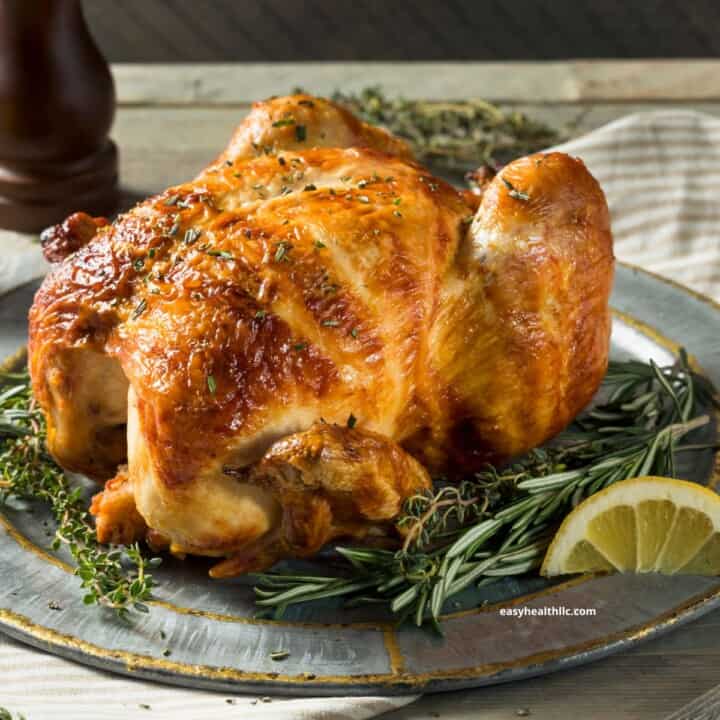
This recipe originally published February 2017, now updated with detailed instructions and FAQs.
Do you love rotisserie chicken as much as I do? Except, I don't really like the excess sodium and fat usually found in grocery store rotisserie chicken... Enter the rotisserie oven!! I got my rotisserie oven about 6 months ago and have used it NON-STOP!
I love having a way to make a healthier version of this recipe. Rotisserie chicken can be used in so many recipes. Here are a few of my favorite ways to use it:
- Low Carb Chicken Philly Cheesesteak Stuffed Zucchini
- 15gm Carb Stuffed Potato
- Low Carb BBQ Chicken Bowl
This rotisserie chicken recipe is based on using a rotisserie oven- these ovens can be found at most large retail chains and also online. It think mine was well worth the investment!
Most home stores and cooking stores sell rotisserie ovens. If you'd rather not invest in one, try my recipe for Oven Baked Rotisserie Chicken instead!
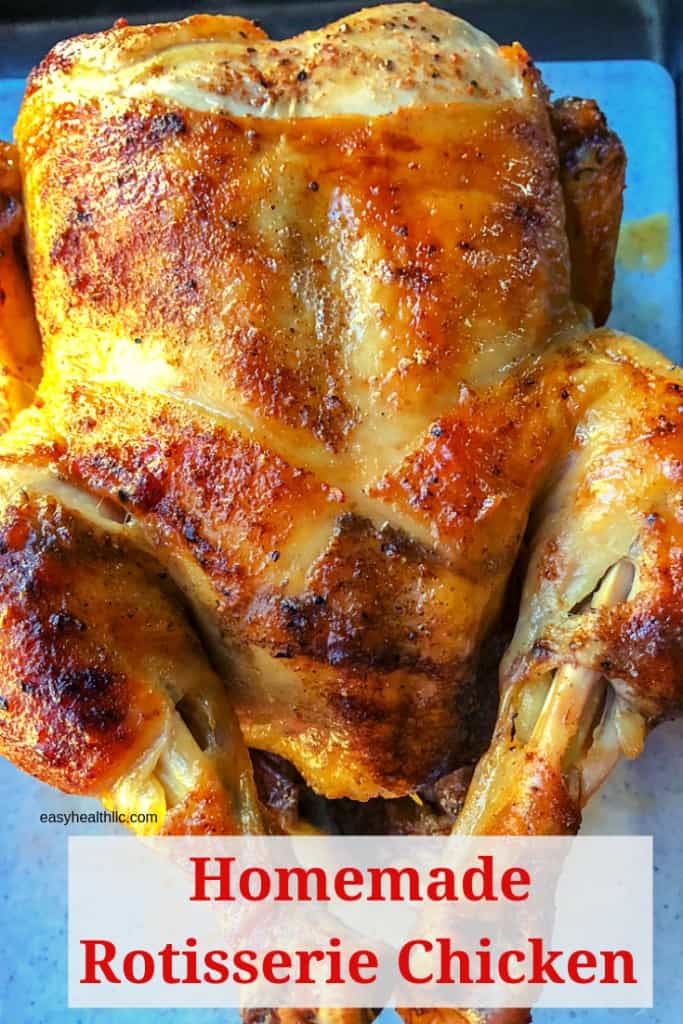
Why this recipe works:
- Uses rotisserie seasoning for an authentic flavor.
- Includes instructions for brining the chicken which add to the flavor.
- Chicken is cooked in a rotisserie oven to lock in the juices and creates a golden crust.
The main ingredients:
- Chicken- I use a not-too-large chicken in the range of 3#. Smaller is better if you can find it. Try not to go over 4# or it will take FOREVER to get done. You may also use cornish hens, just adjust your cooking time down to about 45 minutes (check for doneness with a thermometer).
- Rotisserie Seasoning- I use a mix I buy locally- use your favorite blend or try mixing up your own rotisserie seasoning.
How to make rotisserie chicken:
- Step 1: Brine it
The first few rotisserie chickens I made were very good, but they seemed to be missing something. After researching recipes, I decided I needed to brine my chicken first for best flavor. I am not really a huge fan of salt laden brines due to the sodium that gets drawn into the meat. You can't deny the fact though, that brining adds a lot of flavor! I decided to make a weak brine that still allows some flavor enhancement without so much sodium. I soak my chicken in this weak brine overnight and I think it adds just enough flavor.
After soaking the chicken, pat dry then place in a pan in refrigerator. This will give time for the chicken to dry completely which helps form the crispy skin during cooking.
Photo 1 shows the chicken on the spit after being soaked, trussed and seasoned. Your oven will have instructions for proper placement depending upon the model your purchase.
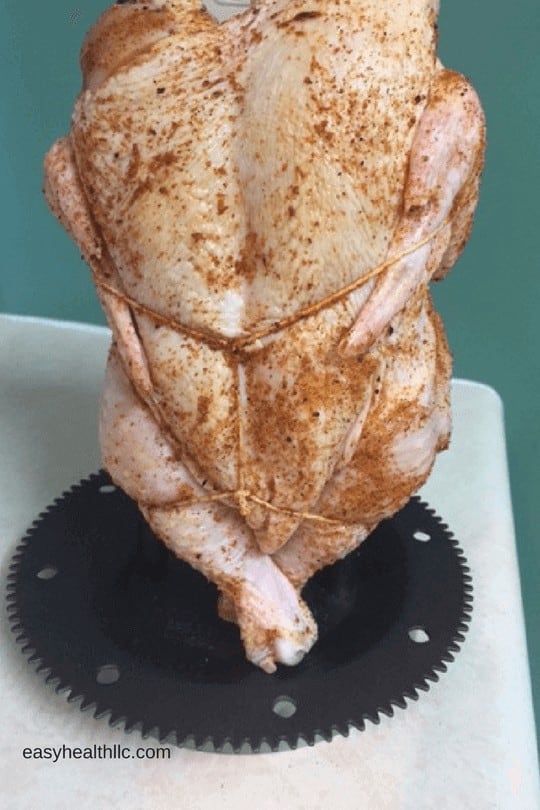
- Step 2: Load chicken into oven
Photo 2 shows the chicken placed into the oven and ready to be cooked. I place my chicken on the very back position closest to the element (without touching) to ensure good browning. After about 30 minutes or so, I move the chicken forward to keep it from burning. It is important to properly truss the chicken so that there are no loose pieces that may touch the element and burn. (Trussing sounds complicated, but it is a simple process of tying the wings and legs close to the body with string.)
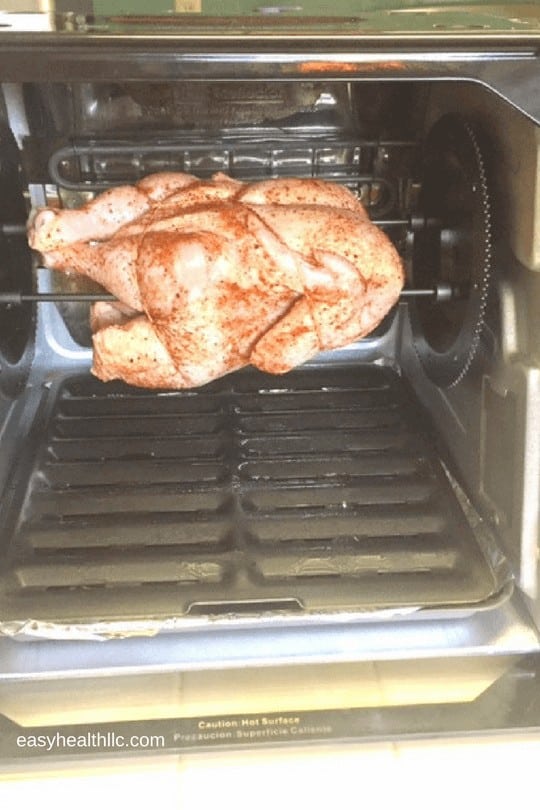
- Step 3: Cook
Photo 3 shows the chicken after about 30 minutes or so. You can see that it is well browned at this point, so this is when I move the spit forward one notch to continue cooking but with less chance of burning.
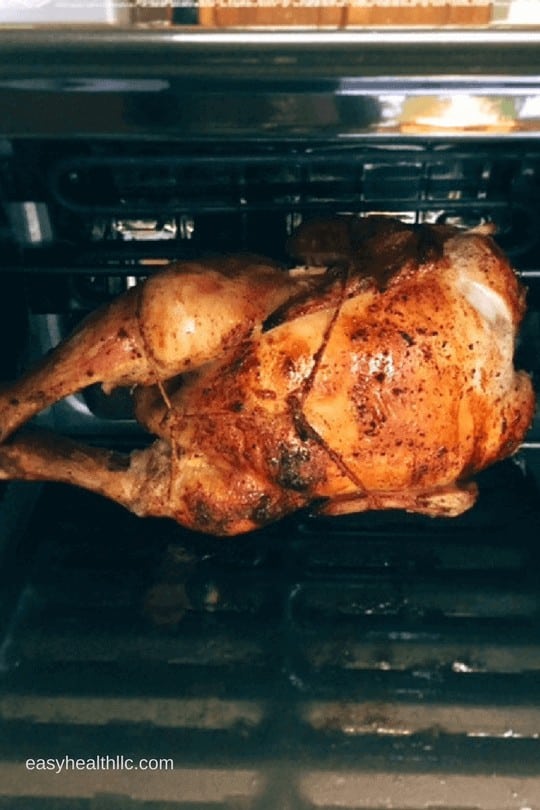
- Step 4: Rest
Photo 4: And here's the final result!!! Perfectly browned rotisserie chicken! At this point, I allow the chicken to rest in a pan for about 10-15 minutes to ensure juicy meat. Please don't skip this step because it makes a huge difference!

Expert Tips:
- Be sure to allow time to brine your chicken. It makes all the difference in achieving flavor throughout the chicken.
- Allow the chicken time in the refrigerator to dry after brining This will help in forming crispy skin during cooking.
- Finally, allow time for the chicken to rest after cooking to maximize juiciness.
Frequently asked questions
The fully cooked chicken may be frozen after cooling down. Freeze in sections so you can defrost the amount you need.
Refrigerated leftover chicken will last 3 days.
Yes. Rotisserie chicken is considered low carb and this recipe contains approx 3gm carb/serving.
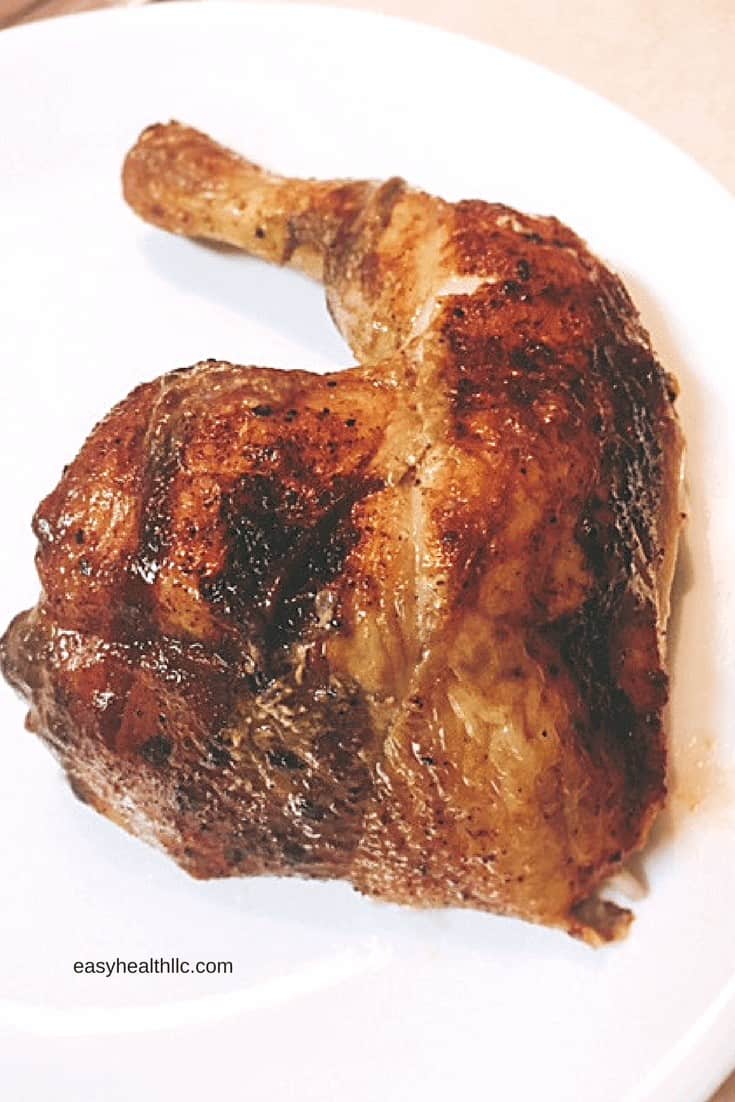
Let me know if you try your hand at homemade rotisserie chicken and how you liked it. Each time I use my rotisserie oven, I learn something new! This recipe includes all the "tweaks" I've made each time so you can skip the learning phase and go straight to the yum!!!
Check out our other recipe favorites:
Did you make this recipe? Please leave your star rating and comment below!
Recipe
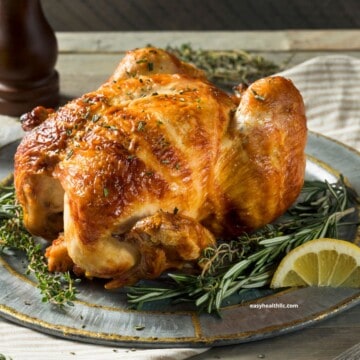
Rotisserie Chicken Recipe
Ingredients
- 1 3.5# chicken, free range (if possible)
- 1 Tablespoon Sugar
- 1 Tablespoon Salt
- 2 Tablespoons Rotisserie Seasoning
Instructions
- Rinse chicken and place in pot just large enough to fit in.
- Heat sugar, salt and 1 cup water in a small pan and stir until dissolved to make brine.
- Pour brine over chicken, then add plain water to pot to just cover chicken. Place pot in refrigerator and allow to soak overnight.
- Remove chicken from pot and discard brine. Pat chicken dry with paper towels or allow to air dry for 15-20 minutes. Truss chicken, then coat all over with rotisserie seasoning.
- Place chicken on spit per your rotisserie oven directions and cook for about an hour or until temp in thickest part of thigh reaches 165 degrees. Allow chicken to rest 10-15 minutes before serving for best flavor.
Notes
- Be sure to allow time to brine your chicken. It makes all the difference in achieving flavor throughout the chicken.
- Allow the chicken time in the refrigerator to dry after brining This will help in forming crispy skin during cooking.
- Finally, allow time for the chicken to rest after cooking to maximize juiciness.
- Feel free to leave off the sugar in the brine if you desire. Here's a link discussing the role of sugar: Sugar enhances the browning of the rotisserie chicken but does not affect the texture of the meat.


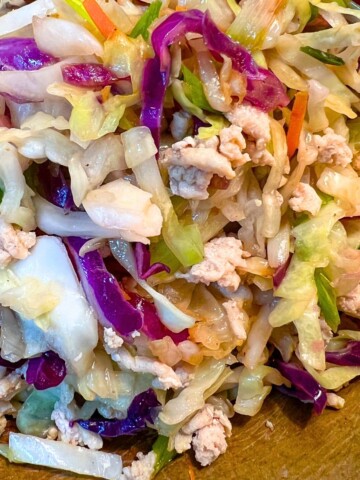

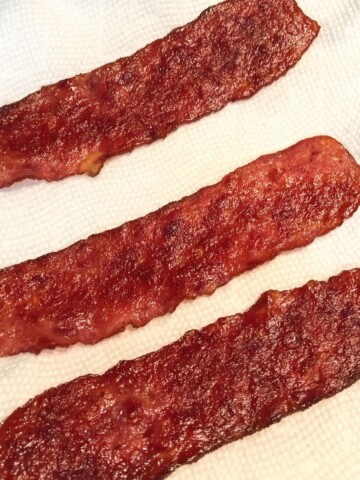
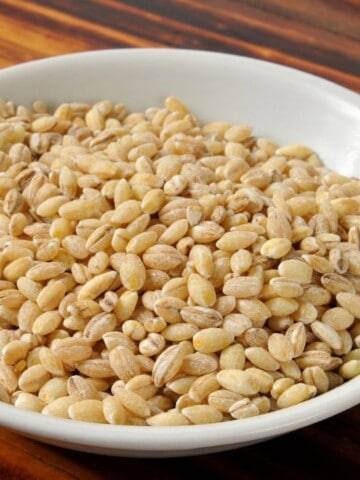
Comments
No Comments